Liu Sanjie s Grand View Garden
Liu Sanjie Grand View Garden, formerly known as Guilin Liu Sanjie Landscape Garden, is located on the Peach Blossom River in Guilin City, Guangxi Zhuang Autonomous Region. It covers an area of more than 100 mu and has a total investment of more than RMB 10,000.
Liu Sanjie Grand View Garden is a new star in Guilin's tourism industry. She takes Liu Sanjie's cultural essence as the theme, and integrates ornamental and entertainment as a leisure and recreational place. After preliminary evaluation and recommendation by Guilin City and Guangxi Tourism Scenic Spot Quality Grade Evaluation Committee, and evaluation by the National Tourism Scenic Spot Quality Grade Evaluation Committee, Guilin Classic Liu Sanjie Grand View Garden was approved by the National Tourism Administration as the national 4A tourism scenic spot and the first batch of demonstration sites of folk tourism in Guangxi on August 10, 2012.
Introduction
Liu Sanjie Landscape Garden is located in Lion Rock in the west of Guilin City. It is situated by the beautiful Peach Blossom River. It lies on the West Mountain in the east, Jiashan in the West and Taohua River in the front of the branch of Lijiang River. Named after Liu Sanjie, a song fairy of the Zhuang nationality, the scenic spot is a theme park displaying Liu Sanjie's culture and Guangxi minority culture classics. Here visitors can experience the essence and fun of Liu Sanjie's culture and Guangxi minority culture from zero distance. Outside the park, there are picturesque mountains and rivers, such as the ancient eight sceneries of Guilin, "Xifeng Sunset" and the eight sceneries of Guilin "Yangjiang Autumn Moon"; the pavilions, pavilions, peaks and caves in the park are secluded, and the most hundred bird gardens in Guilin's ecological paradise; and the Zhuanglou and Mofu houses in the movie "Liu Sanjie".
In the early 1960s, the film "Liu Sanjie" became popular in Shenzhou, Hong Kong, Macao and Southeast Asia, and won several hundred flower awards such as music and art. According to the statistics of China Film Distribution Company, up to now, no domestic film has a higher attendance rate than the gem of Chinese film "Liu Sanjie". At that time, many fans were still unsatisfied after watching it more than ten times. The letters they wrote to Huang Wanqiu, the actor of Liu Sanjie, were more than one meter high every day. At one time, Guilin Song and Dance Troupe took helping Huang Wanqiu read letters as one of its daily tasks. At the beginning of Guilin's tourism development in the 1980s, a group of Hong Kong and Macao tourists flocked to Guilin Song and Dance Troupe to visit Huang Wanqiu every day. In the 1990s, Huang Wanqiu and his husband He Youcai led Liu Sanjie Art Troupe to tour Hong Kong, Thailand and other places. The sensation still remained the same.
Main attractions
Bronze drum
The bronze drum is a mysterious art treasure of the Zhuang and Yao nationalities. In many national minority gardens, the bronze drum is mostly used to symbolize the Zhuang villages. Its drum surface represents the sky, drum body represents the earth, drum foot represents the lower bounds, reflecting the universe outlook of the ancestors of the Zhuang nationality. The ancestors of the Zhuang nationality believed that the universe was a three-layered cylindrical three-dimensional structure. The upper layer is called the upper boundary, inhabited by King Lei and the gods; the middle layer is called the middle boundary, inhabited by human beings; the lower layer is called the lower boundary, under the surface, managed by Jiaolong.
There are the largest bronze drums in Guangxi. On the surface of the drums, the totems worshipped by the Zhuang people, the sun and frogs, are cast. The Zhuang people think that the frog is the child of the God of thunder and that it is the frog that requests rain.
Casting bronze drum
Cast bronze drums are sacrificed to gods first, sometimes even to people. In ancient times, bronze drums were mostly used for offering sacrifices to gods and festivals. In wartime, they were used as commanding tools for soldiers. There are more than 1600 ancient bronze drums in the world and more than 1400 in China, of which more than 500 are unearthed in Guangxi. Guangxi Museum now holds the world's largest bronze drum, drum diameter 165 cm, drum height 67.5 cm, weighing about 300 kg, known as the "King of Bronze Drum".
Yao long drum
Guangxi is the Zhuang Autonomous Region, the capital of which is Nanning. However, the abbreviation of Guangxi is Guilin, because from ancient times to the eve of 1949, the provincial capital and political, cultural and economic center of Guangxi had been in Guilin. The minorities in northern Guangxi are mainly Zhuang, Miao, Yao and Dong. The characteristics of these four minorities can be summarized in four sentences: the songs of the Zhuang nationality, the dances of the Yao nationality, the festivals of the Miao nationality and the buildings of the Dong nationality. The dance of the Yao nationality is characterized by long drum. Long drums are also divided into male and female drums. The female drums are short and thick, while the male drums are long and thin. When the long drum strikes, the Yao girls will dance around with silk scarves in their hands. The long drum in the scenic spot is a public drum.
The long drum of the Yao nationality is related to the ancestor of the Yao nationality. Yao nationality is an international nation. Its people have spread to Southeast Asia, Europe and the United States, so there are many branches of Yao nationality. One of the most important branches of Panyao legend is the ancestor of a hero named Pan Wang, who is the king's horse. King Pan lived with the princess on the hill and had six males and six females. One day, King Pan was hunting in the mountains when an antelope hit the cliff with its horn. Unfortunately, he fell dead. In order to mourn Panwang, his children shot antelopes, peeled them and covered them with drums to express their grief and indignation. This is the origin of the Yao long drum. The Yao people all over the country agreed that October 16 of the lunar calendar is Panwang Festival. On Panwang Festival, there will be a spectacular performance of Yao long drum and group dance.
Mofu Mansion
"Now Chenggehai in Guangxi is handed down by three sisters themselves." Liu Sanjie is a legendary song fairy of the Zhuang nationality. With folk songs as her weapon, she fought tit-for-tat with Mo Huairen, a local hero. The luxury house in the scenic area is Mofu, where Mohuairen lives. Mofu is sitting in the north facing the south, East Qinglong, the left side of the green and beautiful West Hill; the West White Tiger, right side of the moon-stepping mountain inspired by spirit; the South Suzaku, the beautiful Taohua River in the front ring; the North Xuanwu, the Lion Peak recorded by Xu Xiake.
Mo Huairen has a great reputation and wealth. From the perspective of geomantic omen, the gate of Mofu is facing south, such as the lion opens its mouth, holds grain fields for thousands of hectares, and swallows up all kinds of money. The so-called peak mountain is the vein, the river is the gas, the house of Mofu is the jade basin, the Yin and yang are harmonious, and the air is smooth.
Bamboo fun
Guilin is a green world composed of green water, green hills, emerald bamboo and reflection. Among them, the light green bamboo has many varieties, such as Moso bamboo, bitter bamboo, square bamboo, purple bamboo, Phoenix Tail Bamboo and dragon scale bamboo. Look at the right side of the path, this kind of bamboo is called "three unlike". It has a stem of bamboo, but bamboo does not grow hairs, but its stem has palm hairs, and its leaves are authentic sunflower leaves. Bamboo stem, brown hair, sunflower leaves, its name is "brown bamboo". Look at the fat bamboo next to it. Its round and fat stem reminds people of the big belly of Maitreya Buddha, so it is named "Buddha belly bamboo" or "Luohan bamboo". Those who want disaster relief can touch Maitreya Buddha's belly.
An Niu Jia
Through the bamboo path, I came to the home of A Niu Ge, where Liu Sanjie and his brother Liu Er live. In the movie, Liu Sanjie once sat in the house singing with embroidery balls: "In the mountains, only the vines are tangled with the trees. Where in the world can the trees be tangled with the vines?" If the Ivy doesn't tie the tree, it will miss another spring after another spring! uuuuuuuuuuuuu
A Niu Ge's home is a typical strong family hut. The so-called dry-fence dwelling is composed of two to three layers, one is overhead for cattle and pigs, the second is for people, and the third is for grain storage. A Niu Ge is a poor fisherman. He lives by fishing, so there is no third floor. Dry-fence dwelling is a common architectural form in mountainous areas of southern China. As long as you go into Aniugo's house, you will find that it can be anti-snake, dry and cool. The earliest barricade dwellings were found at the Hemudu Cultural Site in Yuhang County, Zhejiang Province. According to expert textual research, it has been more than 7000 years since then.
Golden toad to singing platform
Guangxi is the hometown of folk songs. Since ancient times, the Zhuang people have liked to sing folk songs, which has become the traditional entertainment activities of the Zhuang people. There are many forms of antithetical songs, so the types of singing stations have their own characteristics. "Golden toad to the singing platform" is a very peculiar shape. It consists of a huge Golden Toad carrying a small golden toad. The so-called Golden Toad is the embodiment of the frog god. In the eyes of the Zhuang people, the frog is a sacred animal, known as the frog god. The Zhuang people regard frog God as "the son of God" and "the son of Leigong", so the color of frog God becomes golden.
drum-tower
Drum Tower is a place where old people teach songs, young people sing songs, young people learn songs, old folk artists pass songs and compile Dong Opera. Dong Township is called "the sea of songs", which is worthy of its name. Dong's big songs are not only beautiful and beautiful in tune, but also close and complete in form. The forms of singing are lively and varied, especially the free and harmonious appearance of polyphonic parts in chorus, which is rare in the folk songs of all nationalities in China. Dong Opera is developed on the basis of the big song and is popular with the majority of Dong people.
Liu Sanjie's former residence
Liu Sanjie, a legendary Zhuang girl, was raised by her elder brother Liu Er, whose parents died at an early age, and their brothers and sisters depended on each other for their livelihoods, such as firewood and fishing. Three sisters are not only industrious and intelligent, spinning and weaving is praised by everyone, but also look like lotus in the water. Especially good at singing folk songs, her folk songs are well-known, so far and near singers often gather in their villages, competing with her to sing and learn songs.
Practical information
Ticket information
100 yuan in the daytime and 100 yuan in the evening (20 yuan for citizens, half price for height of 1.00-1.40 meters, no ticket for less than 1.00 meters)
Warm Tip: The evening program is more exciting
Traffic information
Take a bus to the gate of the scenic spot, No. 14 and No. 89
The image on the door and fan of Mofu Gate is called Jiaotu, which is the ninth son of Zhonglong in the legend. It sleeps well, so it's put on the door of the mansion. Because the door of the luxury house is usually not open, Jiaotu can rest assured to sleep: if a visitor comes, only to tap the iron ring in the mouth of Jiaotu, Jiaotu will open his sleeping eyes and look at it - wow, here comes the distinguished visitor! uuuuuuuuuu Immediately the door will be opened to welcome the distinguished guests.
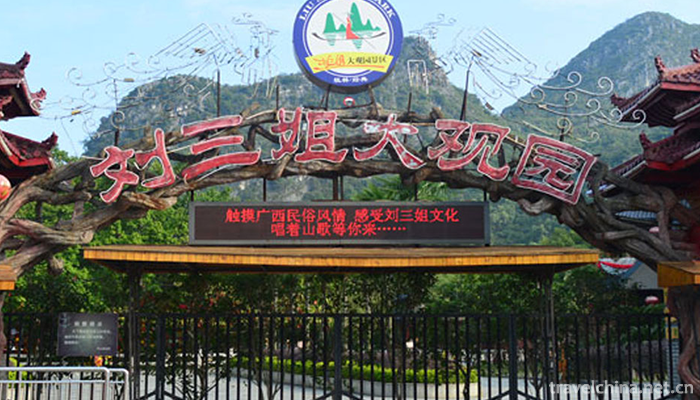
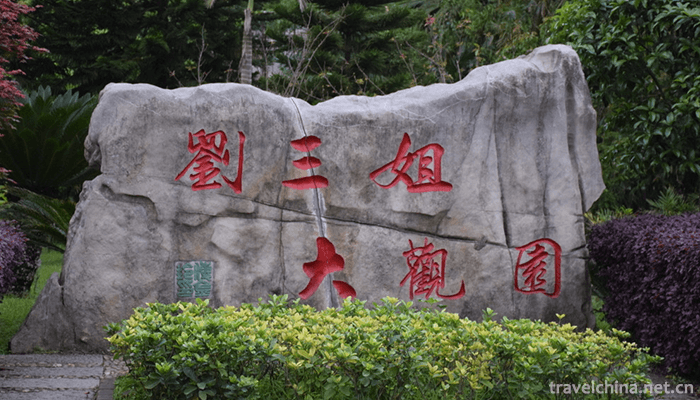
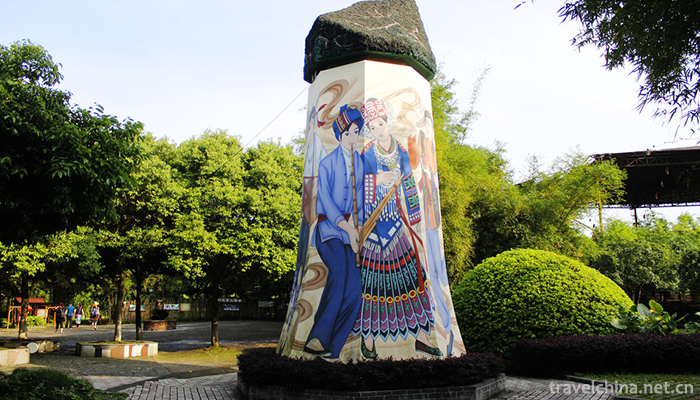
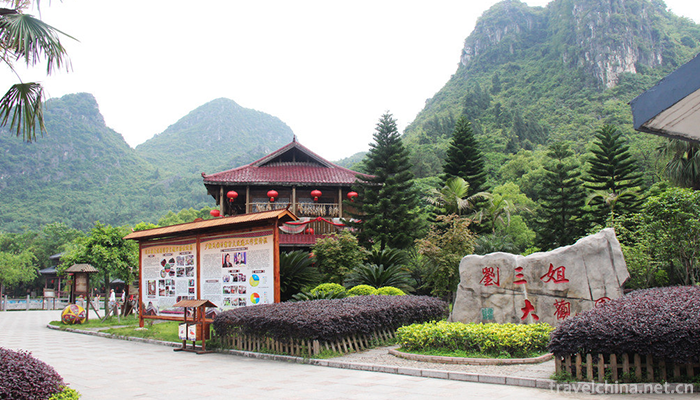
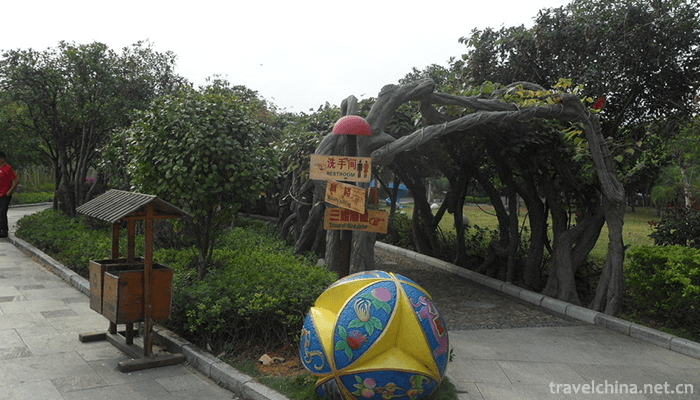
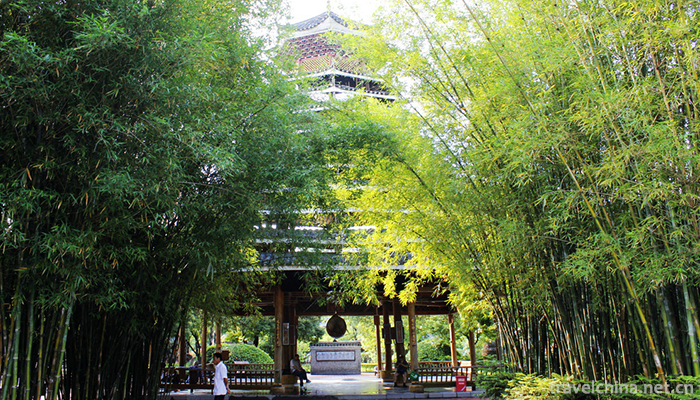
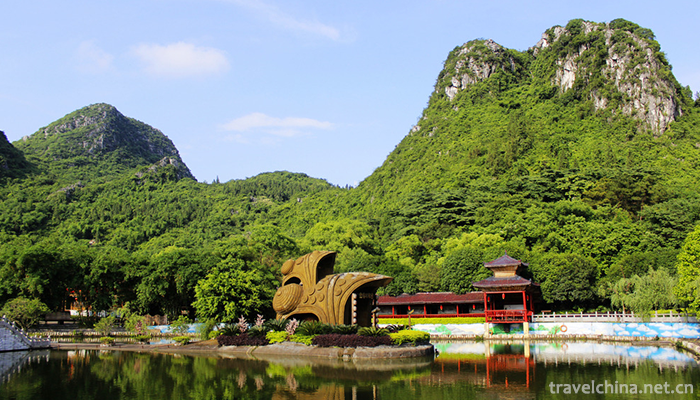
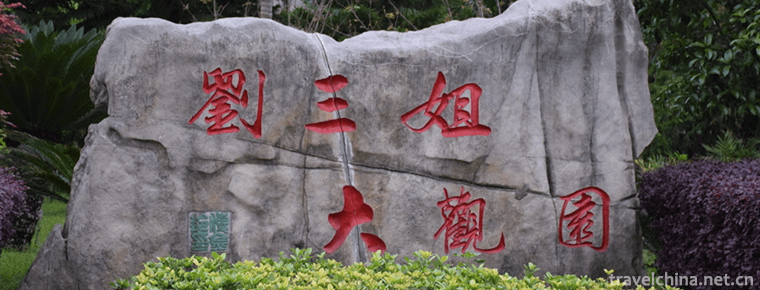
-
1.Lhanagtso RakshasTime 2018-10-12
-
2.Crab congee
crab porridge is a snack in Macao. Macao is located at the junction of saltwater and fresh water, and the crab produced is delicious. Water crab porridge...
Time 2018-10-31 -
3.Peace Hotel Shanghai
Peace Hotel is a landmark building in Shanghai. Located at No. 20 East Nanjing Road, Huangpu District, Shanghai, it is the first modern building in the history of modern architecture in Shanghai
Time 2018-12-16 -
4.Donghekou Earthquake Relics Park
Donghekou Earthquake Site Park is the first earthquake site protection memorial site of Wenchuan Earthquake, located in Qingchuan County, Guangyuan City, Sichuan Province
Time 2018-12-20 -
5.Size Dongtian Scenic Spot
The Size Dongtian Scenic Area (formerly known as the Haishan Scenic Spot and Aoshan Scenic Spot) is located in the southern corner of Hainan Province, 40 kilometers west of Sanya City
Time 2019-01-07 -
6.Leiqiong Haikou Volcanic Group World Geopark
Leiqiong Haikou Volcanic Group World Geopark is located in Shishan Town, southwest of Haikou City. It is only 15 kilometers away from the urban area. The Expressway
Time 2019-01-29 -
7.Zigong Dinosaur Museum
Zigong Dinosaur Museum is located in the northeast of Zigong City, Sichuan Province, 11 kilometers from the city center. It is a large site museum built on the world famous "Dashanpu Dinosaur Fos
Time 2019-03-22 -
8.Tibetan folk songs
Tibetan folk song is a magnificent flower in Tibetan folk literature, with profound ideological and high artistic quality. Throughout the development process of Tibetan folk songs
Time 2019-04-15 -
9.Legend of Qu Yuan
The legend of Quyuan is one of the local folklores in Zigui County, Hubei Province. The people of Zigui created and inherited folk literature with lyric and expressive expression by linking Quyuan wit
Time 2019-06-11 -
10.Inkstone making skills
Inkstone making skills, local traditional handmade inkstone making skills in Shexian County of Anhui Province and Wuyuan County of Jiangxi Province, is one of the national intangible cultural heritage
Time 2019-07-01 -
11.Anhui Science And Technology University
Anhui Science and Technology University is located Anhui Province Chuzhou City Fengyang County and Bengbu City By the state Ministry of Education Approved full-time full-time undergraduate universitie
Time 2019-10-10 -
12.Suining hydrology
There are many small and medium-sized rivers in Suining City. There are 15 rivers with drainage area of more than 100 square kilometers in Suining City, including Fujiang River, Qiongjiang River, Qijiang River, Zijiang River, Qinggang River and Pengxi River.
Time 2020-12-16